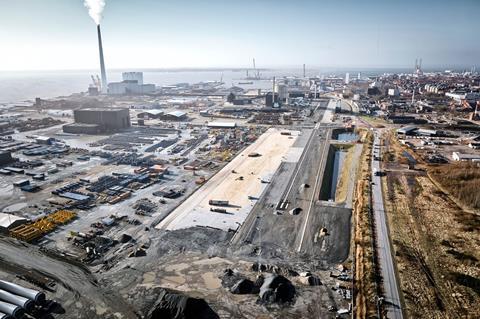Construction work at Denmark’s Port Esbjerg to extend its Combi-Terminal is almost complete.

Once finished, the terminal will boast two parallel tracks, each stretching 835 m, and over 150,000 sq m of a paved terminal area.
Strategically located near the multimodal freight terminals at the port, the terminal has direct access to ro-ro ramps and highway connectivity. The railway terminal at Esbjerg, meanwhile, integrates the port’s European maritime routes to the railway system. The terminal expansion is slated to be fully operational by the end of March.
The Danish port has been busy bolstering its heavy cargo handling capabilities, primarily in support of the wind energy industry. It is member to the Offshore Wind Port Alliance which aims to optimise the deployment of offshore wind in order to meet Europe’s ambitious targets. Members include Port Oostende in Belgium, Groningen Seaports/Eemshaven in the Netherlands, Niedersachsen Ports/Cuxhaven in Germany, Nantes-Saint Nazaire Port in France, Humber in the UK, and recent addition port of Szczecin (Poland).
Among the group’s programmes to increase handling efficiencies is collaboration in the field of AI. Port Esbjerg has demonstrated its success in the field with development of a digital twin that could allow wind energy capacity at the port to be tripled, without using more space.
In terms of manufacturing in the region, Baltic Structures (BSC) is establishing a new monopile manufacturing hub in Esbjerg. BSC said that it plans to build a 100,000 sq m production plant that is capable of making up to 200 extra-large monopiles each year. The focus will be units measuring up to 15 m in diameter, 130 m in length, and weighing around 4,000 tonnes. Transition pieces, pin piles and components for jackets and floating foundations will also be offered.
In July last year, PensionDanmark confirmed that it will make significant investments at Esbjerg to accelerate green energy investments at the Danish gateway, strengthening its position in offshore wind energy and to ensure the roll out of power-to-x and CO2 capture (CCS).
















